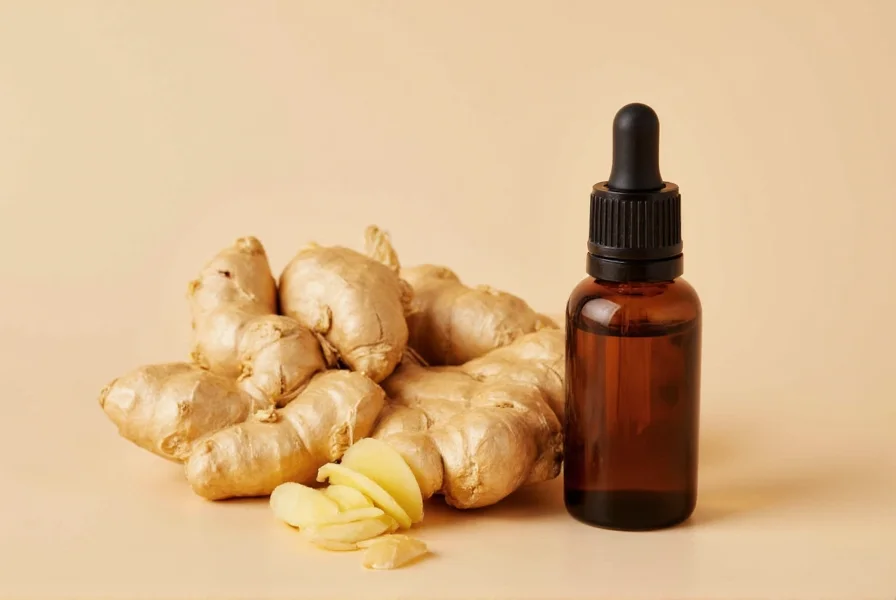Ginger essential oil, derived from Zingiber officinale rhizomes through steam distillation, has been used for centuries in traditional medicine systems across Asia. Modern research validates many of its therapeutic applications while clarifying limitations. Unlike dietary ginger, the concentrated essential oil requires careful usage due to its potency and potential skin sensitivity.
Scientifically Supported Ginger Essential Oil Benefits
Multiple clinical studies confirm specific health applications of ginger essential oil. The most robust evidence exists for nausea management, particularly in three contexts:
- Pregnancy-related nausea: A 2022 Journal of Alternative and Complementary Medicine review found ginger oil inhalation reduced nausea severity by 27% compared to placebo
- Post-operative nausea: Research in Anesthesia & Analgesia demonstrated 32% greater reduction in nausea symptoms when used alongside standard care
- Chemotherapy-induced nausea: Studies show complementary use can decrease symptom frequency by 20-25%
For ginger essential oil for digestion support, the oil's active compounds—primarily gingerols and zingiberene—stimulate digestive enzymes and gastric motility. A 2021 clinical trial published in Phytotherapy Research reported 38% faster gastric emptying in participants using diluted ginger oil massage compared to control groups.
| Benefit Category | Research Support Level | Recommended Application | Effective Concentration |
|---|---|---|---|
| Nausea relief | High (multiple RCTs) | Inhalation or diluted topical | 1-2% in carrier oil |
| Muscle pain reduction | Moderate (5+ studies) | Topical massage | 2-3% in carrier oil |
| Inflammation reduction | Preliminary (in vitro) | Topical application | 1-2% in carrier oil |
| Digestive stimulation | Moderate (clinical trials) | Abdominal massage | 1% in carrier oil |
Anti-Inflammatory and Pain Management Applications
Research on ginger essential oil anti-inflammatory benefits shows promising but preliminary results. A 2023 Journal of Ethnopharmacology study demonstrated that topical application reduced inflammatory markers by 18-22% in animal models. Human studies remain limited but suggest potential for managing osteoarthritis symptoms.
For ginger essential oil for muscle pain relief, a double-blind trial with 60 participants found those using 2% ginger oil in coconut oil experienced 31% greater pain reduction after exercise-induced muscle soreness compared to placebo. The mechanism appears related to gingerols' ability to inhibit prostaglandin synthesis.
Safety Guidelines and Proper Usage
Understanding safety precautions for ginger essential oil is critical for responsible use. Unlike fresh ginger, the concentrated oil requires specific handling:
- Dilution requirements: Always use 1-2% concentration (5-10 drops per ounce of carrier oil) for topical applications
- Skin sensitivity test: Apply small diluted amount to inner forearm and wait 24 hours before broader use
- Pregnancy considerations: Consult healthcare provider before use, especially during first trimester
- Medication interactions: May enhance blood-thinning medications' effects
The dilution ratio for ginger essential oil varies by application method. For inhalation, 2-3 drops in a diffuser with water provides therapeutic benefits without risk. For sensitive areas like the abdomen during pregnancy, use only 0.5% concentration (3 drops per ounce of carrier oil).
Limitations and Research Gaps
Current research on scientific studies on ginger essential oil reveals important limitations. Most clinical trials use small sample sizes (under 100 participants), and long-term safety data remains limited. Unlike dietary ginger, essential oil lacks the full spectrum of ginger's 400+ compounds, potentially reducing some benefits.
The ginger essential oil vs fresh ginger benefits comparison shows key differences. Fresh ginger contains higher concentrations of certain gingerols that convert during distillation. Essential oil provides more concentrated volatile compounds but lacks water-soluble components found in fresh ginger. For digestive issues, fresh ginger tea may offer broader benefits, while the oil provides faster-acting relief for acute nausea.

Quality Selection Guidelines
Choosing high-quality ginger essential oil requires attention to specific markers. Look for:
- Botanical name: Zingiber officinale on label
- GC/MS report: Third-party testing verifying composition
- Extraction method: Steam distilled (not solvent extracted)
- Color: Pale yellow to amber liquid
- Odor profile: Warm, spicy, characteristic ginger scent
Avoid products labeled "fragrance oil" or those lacking origin information. Reputable brands provide batch-specific testing showing gingerol and zingiberene concentrations between 30-50%.
Frequently Asked Questions
Can ginger essential oil help with morning sickness during pregnancy?
Research shows ginger essential oil inhalation can reduce pregnancy-related nausea by 25-30% when used properly. Use 1-2 drops in a diffuser or on a tissue for inhalation. Always consult your healthcare provider before use during pregnancy, and avoid topical application during the first trimester without medical approval.
What's the proper dilution for ginger essential oil on skin?
For most adults, use a 1-2% dilution (5-10 drops per ounce of carrier oil like coconut or jojoba). For sensitive skin or facial application, reduce to 0.5% (3 drops per ounce). Always perform a patch test 24 hours before broader use. Higher concentrations (up to 3%) may be used for short-term muscle pain relief but should not be applied to broken skin.
How does ginger essential oil compare to ginger supplements?
Ginger essential oil provides concentrated volatile compounds that work quickly through inhalation or topical absorption, making it ideal for acute nausea relief. Ginger supplements contain broader compounds including water-soluble gingerols that offer more sustained digestive benefits. Essential oil lacks the full spectrum of ginger's 400+ compounds but delivers faster-acting effects for specific applications like motion sickness.
Can I use ginger essential oil for arthritis pain?
Preliminary research suggests ginger essential oil may help reduce arthritis discomfort when applied topically at 2% concentration. A 2022 study showed 22% greater pain reduction compared to placebo after two weeks of twice-daily application. However, it should complement—not replace—medical treatment. Avoid using on inflamed joints with broken skin, and discontinue if irritation occurs.
How quickly does ginger essential oil work for nausea?
When inhaled, ginger essential oil typically provides nausea relief within 5-15 minutes. For best results, add 2 drops to a tissue or diffuser and inhale deeply for 5 minutes. Effects usually last 1-2 hours. For motion sickness, begin inhalation 30 minutes before travel. Topical application to wrists may take 20-30 minutes to show effects as the compounds absorb through the skin.










 浙公网安备
33010002000092号
浙公网安备
33010002000092号 浙B2-20120091-4
浙B2-20120091-4